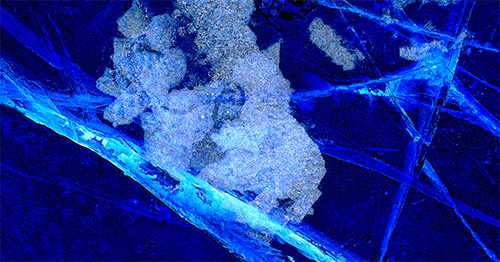
10 Flint Avenue, P.O. Box 398, Bancroft, Ontario K0L 1C0 Phone 613-332-1542 email: artgalleryofbancroft@gmail.ca
Proudly supported by:

Opening reception:
Thursday, Month 3 | 7:30 pm

The Art Gallery of Bancroft welcomes Toronto-based photographer Francis Livingston as the featured artist of the October exhibition. The exhibition features both stunning photographs of outdoor Holiday lights, as well as images created by nature and captured in ice.
Born in Kingston, Ontario, Francis Livingston is an artist and photographer currently living in Toronto, Ontario. He received his formal photography education at The Sheridan College of Applied Arts and Technology in Oakville and at The New School of Social Research in New York City. He also spent 7 years teaching photography and DSLR camera systems for a nation-wide photography school based in Toronto.
Francis has had a number of successful careers to date, first as a long distance trucker, then as a cabinet and furniture maker. He currently works in the film and television industry. His photographic specialty is high resolution, multi-image panoramas of urban and natural environments. He is also working on a series of photographic essays chronicling his many and varied life experiences.
Technically these images are quite challenging to find and to capture. I rely on newspaper articles, TV specials, the internet and word of mouth. I have never been interested in corporate light displays because all those require is someone willing to sign a cheque. I am however fascinated by individuals who get bitten by the lighting bug because it requires such a commitment of time, effort and money.
I realized quickly that my photos had to show context as well as the light display itself so each photograph is comprised of a number of high rez images stitched together. My exposures are quite long, around a second or two, so movement is a challenge and wind is often present. I have also discovered, over the years, that the Christmas lights without snow are not as interesting and snowless Decembers are becoming common.
I spent my early childhood in a suburb of Kingston, Ontario, called Reddendale. My family lived in a house close to the lake and every winter I would walk out onto the ice and peer, with fascination, into the lakes’ frozen depths. It always seemed magical to me that I could walk on something that only a few months previously had been incapable of supporting my weight. I loved the huge cracks in the ice which showed me how thick it had become and was always puzzled when I saw little fish frozen, captured in the ice. As a child I always wondered how that could happen. It was one of life’s big mysteries at the time.
Several winters back I was in Kingston to buy a piece of camera equipment being advertised on Kijiji. Every time I visit Kingston I always make a point of driving down by the water and revisiting my childhood haunts. On that day I noticed many people out on the ice, skating, so I parked my car and went for a walk, camera in hand. Once again I felt the excitement I had felt as a child at being able to walk on water and peer into it’s mysterious depths. A rather unusual aspect of that particular time and place was that the ice was not dead flat as it always had been on previous occasions. Instead it bore the marks of shallow waves on its’ surface. I had long ago figured out that the fish frozen in the ice had probably died beforehand and become entombed. Now I was faced with a new mystery, how can water freeze solid while still bearing the marks of its movement? To this day I don’t have an explanation for that.
As a photographer I almost exclusively shoot series and sequences. Much as I admire Henri Cartier-Bressons’ concept of the decisive moment and I am still a big fan of his work, my own work has always been more of an exploration of the affects of time and space on a scene. I will often return to the same location over and over again to see how it has changed with the passage of time or I will follow a subject for years in order to build up a body of images that explores the subject more fully then one image can. In this case I was only able to return once before the weather changed and the ice became dangerous to walk on.



10 Flint Avenue, P.O. Box 398, Bancroft, Ontario K0L 1C0 Phone 613-332-1542 email: artgalleryofbancroft@gmail.ca
Proudly supported by:

Charitable Registration #: 81973 7750 RR0001
How to Pay
Etransfer to artonflint@gmail.com
(Don’t forget to include your email address in the etransfer for your tax receipt!)
Drop in at the Gallery or mail us a cheque:
AGB, 10 Flint Avenue, P.O. Box 398, Bancroft, ON K0L 1C0
The Art Gallery of Bancroft is situated on the traditional territory of the Anishinaabeg Algonquins, which is known to be unceded. Indigenous people have been stewards of this land since time immemorial; as such we honour and respect their connection to the land, its plants, animals and stories. Our recognition of the contributions and historic importance of Indigenous peoples is sincerely aligned to our collective commitment to make the promise and the challenge of truth and reconciliation real in our community.